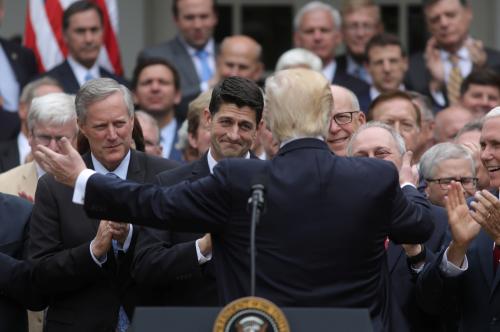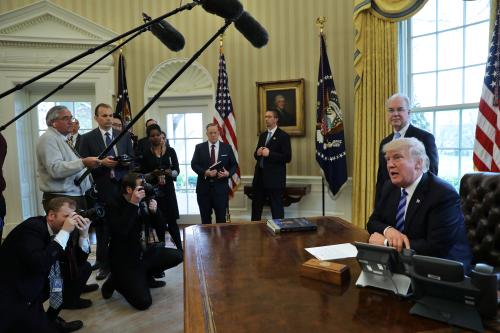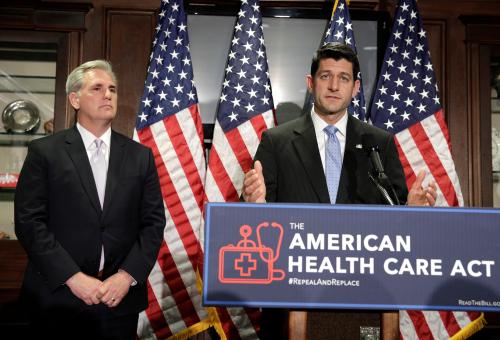After numerous fits and starts since January, House Republicans finally passed a bill repealing and replacing parts of the Affordable Care Act. Back in March, I described several weaknesses revealed by House Republicans’ initial failed attempt at passing the legislation. Now that they’ve managed to get something across their chamber’s finish line to send to the other side of the Capitol, let’s look back at those three conclusions. What has changed? How might these weaknesses play out going forward?
First, I noted that for many key House leaders, the AHCA was the first time they needed to deliver votes on a high-profile measure under unified party control of the House, Senate, and the presidency. While they do appear to have found some of their footing, successfully building a coalition—if a razor-thin one—to advance the measure, legislating is about more than just getting to yes on initial passage of a single bill. If the Senate passes its own version of the legislation, can the House leaders effectively work with their upper chamber counterparts to reach a compromise? Do emerging details about the possible consequences of last-minute additions to the bill—like these, described by the Wall Street Journal—undermine the trust of rank-and-file members in their leaders? As Jonathan Bernstein points out, we often think of shielding members from tough votes as one of the Speaker of the House’s key responsibilities, but one that Speaker Paul Ryan (R-Wisc.) has not taken up in this case. Does this matter going forward?
I also discussed how the March experience with the AHCA illustrated divisions within the Republican party for which unified party control may not be a panacea. To get to yes after the March failure, Republicans had to bring on board all or part of two factions in their conference: the Freedom Caucus (HFC) and the so-called Coverage Caucus. Given the HFC’s internal structure and their choice to make decisions together as a bloc during the first round of negotiations, it made sense to try to flip the group as a unit, and then proceed to bring the Coverage Caucus types on board one at a time. If and when a bill comes back to the House from the Senate, however, what will the strategy be? Given the makeup of the Senate, such a bill is, on net, more likely to be closer to the Coverage Caucus’s position than the Freedom Caucus’s. Does the HFC try to hold out for concessions then?
In addition, some might argue the passage of the AHCA demonstrates the HFC’s leverage within the caucus more broadly. But that influence may be more limited on other bills not handled through the special budget reconciliation process. As we saw on the omnibus spending bill that both chambers cleared this week, when Republican leaders need Democratic votes in the Senate to overcome a filibuster, pressure from the right end of the party has less of an effect on the final legislation.
Finally, as many have argued, the AHCA faces a potentially rocky road ahead in the Republican-controlled Senate, for both policy and procedural reasons. In the case of the former, there are some Republican senators who have expressed concerns about the content of the House’s bill (especially its Medicaid provisions), while in the case of the latter, it is unclear what, if any, provisions in the House measure will have to be struck to comply with the Byrd Rule. While the probability of ultimately getting something to the president’s desk has certainly gone up with House passage, there are still many hurdles to clear.
The Brookings Institution is committed to quality, independence, and impact.
We are supported by a diverse array of funders. In line with our values and policies, each Brookings publication represents the sole views of its author(s).








Commentary
So the House passed its health care bill. What now?
May 4, 2017